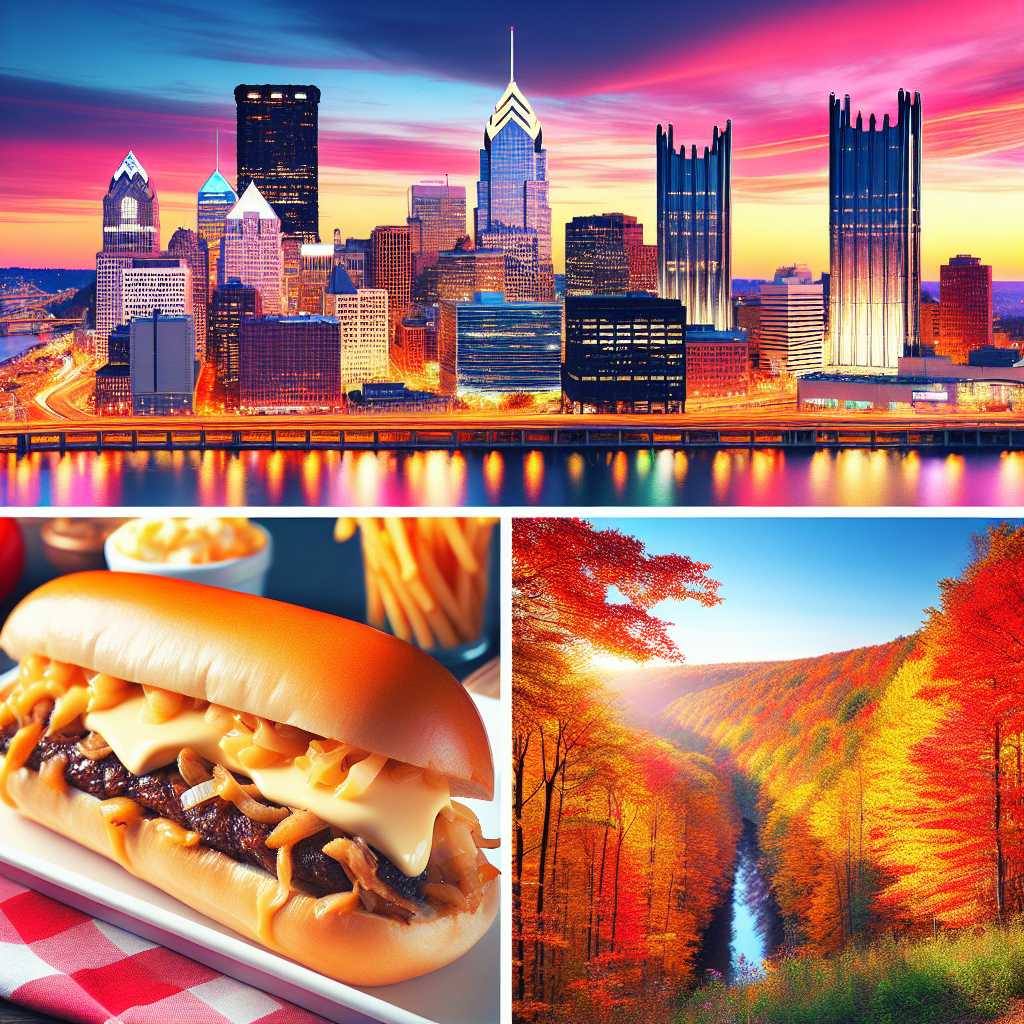Understanding Pennsylvania: A Keystone State Overview
====================================================
Pennsylvania, often referred to as the Keystone State due to its central role in the economic, social, and political development of the United States, is a state with a diverse heritage and vibrant present. Rich in history, it’s a place where the past is palpably interwoven with contemporary culture. This article aims to explore Pennsylvania’s geographic, historical, demographic, economic, and cultural facets, offering a comprehensive view of this dynamic state.
Geography and Climate of Pennsylvania
Pennsylvania is located in the Mid-Atlantic region of the United States and is characterized by its varied topography and climate. It borders six other states: New York, New Jersey, Delaware, Maryland, West Virginia, and Ohio. To the northwest, it also shares a water boundary with Canada via Lake Erie. The state is split into several regions including the Atlantic Coastal Plain, the Piedmont Plateau, and the Appalachian Mountains that extend through much of the Commonwealth.
The climate in Pennsylvania varies from region to region due to its topography. In general, it experiences four distinct seasons with cold winters and hot summers. The southeastern part of the state has a more moderate climate, while the mountainous areas encounter lower temperatures and more precipitation.
Historical Significance of Pennsylvania
–
Pennsylvania’s history is notably significant to the United States. As one of the original 13 colonies, it played an integral role in the founding of the country. The state was the site of many pivotal events such as:
– The signing of the Declaration of Independence in 1776.
– The drafting of the United States Constitution at the Philadelphia Convention in 1787.
– The pivotal Battle of Gettysburg during the American Civil War.
In addition to these nation-shaped occurrences, Pennsylvania is also celebrated for its rich industrial heritage, especially in steel production and coal mining which became significant in the 19th and early 20th centuries.
Demographics and Population Trends
Pennsylvania is home to a sizable and diverse population. According to recent estimates made by the United States Census Bureau, it harbors over 12 million residents, making it one of the most populous states in America. The state possesses a demographic landscape composed of various ethnicities and cultures with significant numbers of African Americans, Hispanic/Latinos, Asian Americans among its populace.
Urbanization is evident through the growth of metropolitan areas like Philadelphia, which is the largest city in Pennsylvania and Pittsburgh; both cities serve as cultural and economic centers for the state. Moreover, there have been shifting population trends affecting regions differently – with some rural areas experiencing decline whereas urban centers gain inhabitants.
Economic Overview
The Pennsylvanian economy is multifaceted and robust amplifying its status as an impactful member among U.S. states. Key sectors include manufacturing, agriculture (above all dairy products and mushrooms), and energy, particularly natural gas extraction from Marcellus Shale since the late 2000s has significantly increased state revenue.
Pennsylvania is also notable for its contribution to higher education services possessing renowned institutions such as the University of Pennsylvania (an Ivy League institution) along with numerous state-related schools that have spawned innovation clusters particularly around Philadelphia and Pittsburgh driving economic growth and technological advancement.
Cultural Landscape and Tourism
The cultural landscape in Pennsylvania is equally rich and diverse featuring:
– Museum exhibits such as those found in the Philadelphia Museum of Art or Pittsburgh’s Andy Warhol Museum.
– Culinary uniqueness represented by ‘Philly’ cheesesteaks, soft pretzels.
– Major sports franchises – NFL’s Pittsburgh Steelers and Philadelphia Eagles; MLB’s Pittsburgh Pirates and Philadelphia Phillies.
– Historical sites that draw millions each year including Independence Hall National Historic Park or Gettysburg National Military Park.
Tourism plays a significant role in Pennsylvania’s economy showcasing vast offerings for visitors encompassing outdoor activities like hiking through scenic Pocono Mountains or exploring Amish communities present primarily in Lancaster County providing insights into different ways of life within American society.
Education System in Pennsylvania
–
Pennsylvania boasts a comprehensive education system featuring public K-12 institutions which are typically funded by property taxes while offering numerous higher education choices ranging from two-year community colleges to internationally acclaimed universities partaking critically to workforce preparedness.
Additionally, compulsory education laws make statewide education accessible thereby aligning opportunities towards productive citizenship forecasting continuity in individual growth throughout Pennsylvania communities.
Transportation Infrastructure
The transportation infrastructure within Pennsylvania plays a pivotal role in courting commuters ease while enabling commerce fluidity spanning alongside:
– Vast network of highways making automobile travel predominant.
– Railway services provided by Amtrak particularly between Pittsburgh–Philadelphia–New York City corridors.
– Air transit facilitated mainly through two international airports: Philadelphia International Airport (PHL) and Pittsburgh International Airport (PIT).
Government Structure
At the state level, Pennsylvania operates under a mixed government structure comprising:
– Executive Branch: Headed by an elected governor currently accountable for statewide administration.
– Legislative Branch: Bicameral body consisting of Pennsylvania General Assembly divided into Senate (upper house) and House Representatives (lower house).
– Judicial Branch: Hierarchical court system headed by Supreme Court overseeing justice delivery across commonwealth boundaries.
These branches ensure checks balances perform harmoniously aimed broad-based policy initiatives enhancing communal benefits across Pennsylvanian spheres.
Future Prospects
Ongoing changes inclusive societal dynamics innovation surges global market engagements propose fascinating times ahead for Pennsylvania intersected previously laid traditions with possible transforming trends establishing frameworks permitting continuous evolution augmenting principal standings within overarching U.S landscapes.
*Notes*
Image Description: A montage highlighting significant aspects of Pennsylvania: showcasing downtown Pittsburgh at dusk with piercing skylines; cheesesteak indicative Pennsylvanian cuisine; perhaps even autumn foliage Pocono Mountains symbolizing four-season climate unique spacing within Beaver State.
q74Sy

